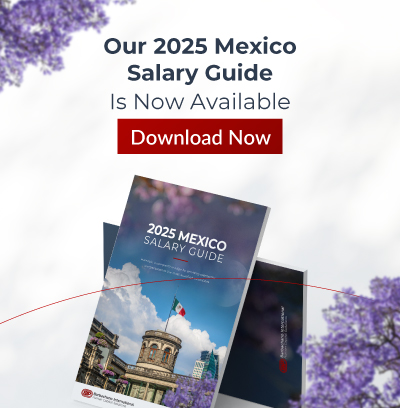
State of the Manufacturing Sector
COVID-19 certainly didn’t do the manufacturing industry any favors. Mandatory shutdowns catalyzed unprecedented demand once factories opened back up, but when production finally recommenced, it was met with massive supply chain issues that made meeting the increased demand impossible. To top it off, the whole world is experiencing a labor shortage the likes of which we’ve never seen. In fact, studies show that by 2030, the world will be short about 85 million workers. In manufacturing alone, Deloitte predicted a labor shortage of 2.5 million workers.
The above-listed problems are relatively new, but they exacerbate the age-old problem the manufacturing sector has always faced: perception. The average person tends to assume that manufacturing careers are low-paying, dirty, and tedious—almost as if nothing has changed since the industrial revolution. In reality, manufacturing today is a very high-tech industry, and manufacturing careers often require specialized skills and offer commensurate compensation (Vye Agency).
The perception gap, however, leads to a dearth of applicants for manufacturing jobs. In fact, according to the NAM Manufacturers’ Outlook Survey—fourth quarter 2021, nearly 83% of manufacturers say that attracting and retaining a quality workforce is their top challenge. It seems not many starry-eyed college graduates dream of a career in this sector. Young professionals favor technology and healthcare and other opportunities with a better image.
“Trickle-Up” Economics
At this point, you might be thinking, “This sounds like a problem for rank-and-file manufacturing recruiters, not manufacturing executive recruiters.” That assessment, however, is simply untrue. Because the entire industry is beset by these issues at the moment, top executive talent can also be very hard to recruit and retain. You’ve heard of the “trickle-down” effect? In this case, the effects trickle up. Sought-after manufacturing executives and decision-makers are often wary of taking on positions in an industry they may feel is riddled with hard-to-solve problems, so manufacturing recruiting firms from Mexico to Ohio have their work cut out for them.
Therefore, solutions for recruiting manufacturing professionals or “top dogs” will look about the same. If you resolve the systemic issues at the bottom, the positive effects will rise to the top like cream and set you up as an employer of choice for candidates at every level.
Review Your Brand
Perception is king. Did you know 72% of job seekers research a company before they ever apply to work there? Also, according to recent research, the vast majority of candidates refuse to consider a company if they feel it has a bad reputation, which begs the question: Are you managing your brand? If not, you could be limiting your potential talent pool more than you know.
For that reason, you would be well-advised to conduct a brand audit by following these nine steps (Score):
- Assess your external marketing materials.
- Review your website.
- Review your social media data.
- Survey your customers.
- Survey your target demographic.
- Survey your employees.
- Evaluate your competitors.
- Review your results.
- Implement needed changes and continue to monitor your progress.
In a nutshell, you need to make sure your brand has a highly-recognizable presence, a flawless image, and an impeccable reputation.
Review Your Compensation Package
According to PayScale, manufacturing workers on the production floor earn an average of $16.34 per hour in the U.S. and $3.10 an hour in Mexico (Trading Economics). In today’s economy, that amount will likely not even see workers through from one paycheck to the next. Even if you pay your executives much more competitively, an underpaid, dissatisfied workforce will lead to high turnover and a rocky company culture.
Eric Palmer, HR specialist for a production plant in Utah, says, “When the production workers aren’t happy, nobody’s happy. People who feel underpaid and unappreciated tend to quit in droves, and the stress of trying to manage and run a company going through that kind of turnover eventually means nobody wants to work there.”
Do your research. Make sure you compensate everyone competitively and generously, from the mailroom clerk to the CEO. Doing so will go a long way toward attracting and keeping top talent.
Get Creative
The benefits and perks you offer can make or break you as an employer of choice, but you may have to think beyond health and dental care (although these packages are obviously important). Nearly every company can put together an attractive basic benefits package. So yes, do that, but then go a little further and consider what perks you can offer. Perks are creative ways to attract and retain talent such as (Edward Lowe Foundation):
- Extra PTO
- A title upgrade
- Flexible scheduling, hybrid and at-home work options
- Drycleaning and housekeeping services at a discounted group rate
- Tickets to exclusive events
- Gym membership and Spa treatments
- Child care benefits
These kinds of thoughtful gestures tell an employee, “You are valued. We want you here. You’re doing a great job.” These are just a few ideas; let your employees’ interests and your budget and imagination be your guide!
To recruit and retain top talent in the manufacturing sector, you need to create and maintain a spotless image, pay well, and look out for your employees’ happiness and well-being. Manufacturing recruiters know that making these investments will pay huge dividends in the long run, in terms of a robust company culture that attracts the cream of the crop to your door.

By Fernando Ortiz-Barbachano
President & CEO of Barbachano International (BIP)
Barbachano International is the premier executive search and leadership advisory firm in the Americas (USA, Mexico, Canada, and Latin America) with a focus on diversity and multicultural target markets. Outplacement and Exe

